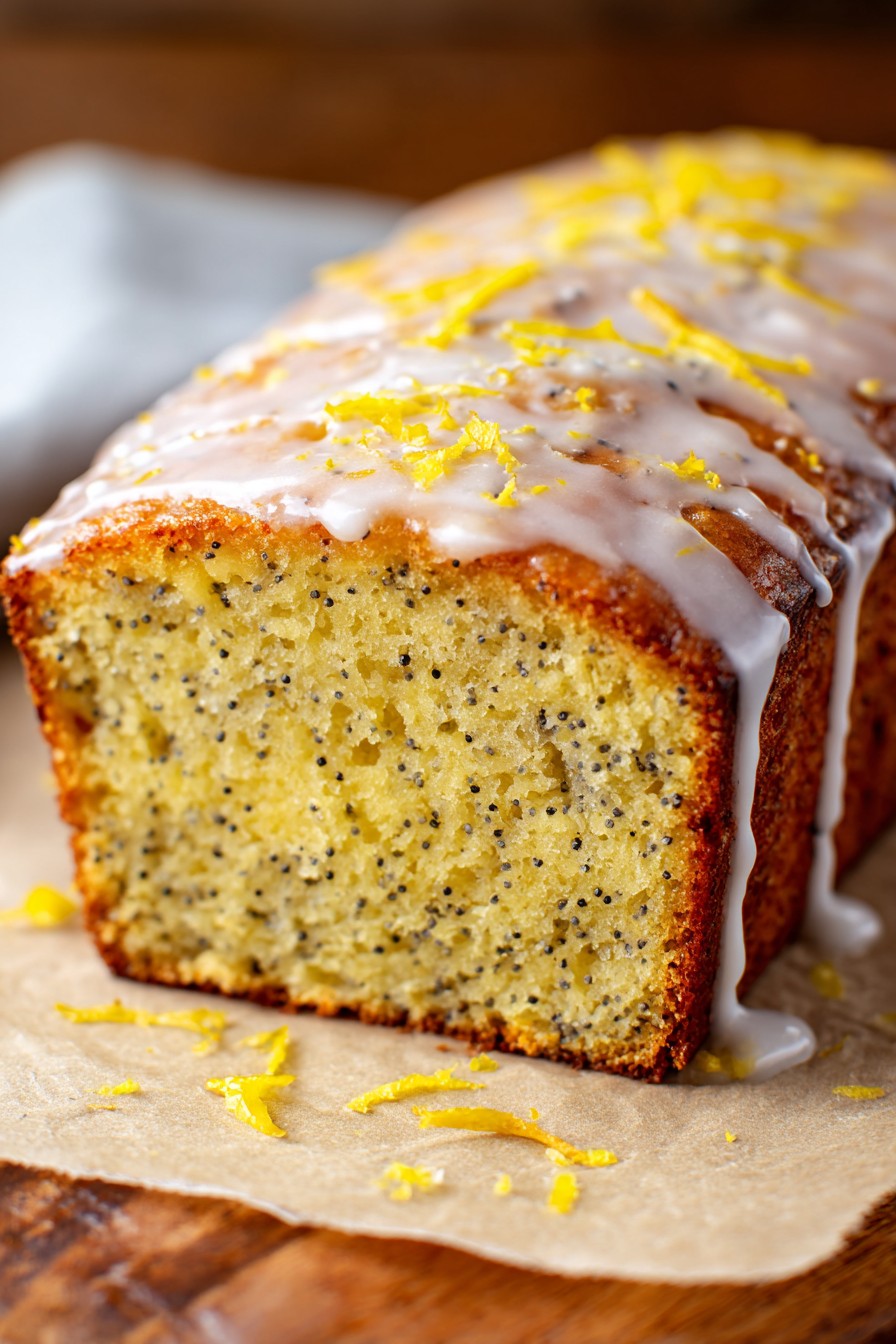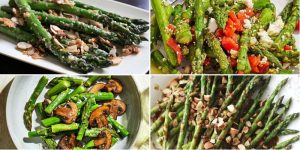Perfectly balancing bright citrus notes with satisfying texture, this lemon poppyseed bread delivers both exceptional flavor and nutritional benefits. Packed with vitamin C from fresh lemon zest and juice, plus the digestive-supporting properties of poppy seeds, this recipe transforms simple ingredients into a wholesome baked good that nourishes body and soul.
Why This Recipe Works
- The combination of fresh lemon zest and juice provides a double dose of citrus flavor while delivering vitamin C, an essential antioxidant that supports immune function and collagen production
- Using Greek yogurt instead of sour cream adds extra protein and probiotics while maintaining the moist, tender crumb structure that defines exceptional quick breads
- Poppy seeds contribute not just visual appeal and crunch, but also valuable minerals like calcium and manganese, along with dietary fiber that supports digestive health
- Balancing whole wheat and all-purpose flours creates a nutrient-dense base with complex carbohydrates while preserving the light texture that makes this bread so enjoyable
- The careful creaming method ensures proper aeration of the butter-sugar mixture, resulting in even rising and consistent texture throughout the baking process
Ingredients
- 1 ½ cups all-purpose flour
- ½ cup whole wheat flour
- 2 teaspoons baking powder
- ½ teaspoon baking soda
- ½ teaspoon salt
- 2 tablespoons poppy seeds
- ½ cup unsalted butter, softened to room temperature
- ¾ cup granulated sugar
- 2 large eggs, at room temperature
- 1 cup plain Greek yogurt
- 2 tablespoons fresh lemon juice
- 2 tablespoons lemon zest
- 1 teaspoon vanilla extract
Equipment Needed
- 9×5 inch loaf pan
- Stand mixer or electric hand mixer
- Medium and large mixing bowls
- Whisk
- Spatula
- Zester or fine grater
- Cooling rack
- Toothpick or cake tester
Instructions

Prepare Your Ingredients and Pan
Begin by preheating your oven to 350°F and thoroughly greasing your 9×5 inch loaf pan with butter or non-stick cooking spray. In a medium bowl, whisk together 1 ½ cups all-purpose flour, ½ cup whole wheat flour, 2 teaspoons baking powder, ½ teaspoon baking soda, ½ teaspoon salt, and 2 tablespoons poppy seeds until well combined. The whole wheat flour adds valuable fiber and nutrients while the poppy seeds contribute both texture and nutritional benefits, including calcium and manganese. Ensure all dry ingredients are evenly distributed to prevent clumping during mixing. This preparation step is crucial for achieving consistent texture throughout your finished bread. Having your ingredients measured and ready before beginning the mixing process ensures you can work efficiently and maintain the proper chemical reactions that occur during baking.
Cream Butter and Sugar
In your stand mixer fitted with the paddle attachment, or using a large bowl with an electric hand mixer, combine ½ cup softened unsalted butter with ¾ cup granulated sugar. Beat on medium-high speed for 3-4 minutes until the mixture becomes light, fluffy, and pale in color. This creaming process is essential for incorporating air into the batter, which helps the bread rise properly during baking. The sugar crystals help create tiny air pockets in the butter that expand when heated, resulting in a lighter texture. Scrape down the sides of the bowl periodically to ensure even mixing. The butter should be properly softened—able to hold an indentation when pressed but not melted—for optimal creaming. This step forms the foundation of your bread’s texture, so don’t rush it.
Incorporate Wet Ingredients
Add 2 large room-temperature eggs to the creamed butter-sugar mixture one at a time, beating well after each addition until fully incorporated. Then mix in 1 cup plain Greek yogurt, 2 tablespoons fresh lemon juice, 2 tablespoons lemon zest, and 1 teaspoon vanilla extract. The Greek yogurt provides protein and probiotics while contributing to the bread’s moist texture, and using room-temperature ingredients ensures they emulsify properly with the fat. The lemon zest contains essential oils that deliver intense citrus flavor, while the juice provides tartness that balances the sweetness. Mix just until combined—overmixing at this stage can develop gluten and result in a tougher texture. The combination of acidic ingredients (lemon juice, yogurt) reacts with the baking soda to create lift.
Combine Wet and Dry Mixtures
Gradually add the flour mixture to the wet ingredients in three additions, mixing on low speed just until the flour disappears after each addition. Use a spatula to scrape the bottom and sides of the bowl to ensure no dry pockets remain. The key here is gentle mixing—overworking the batter will develop gluten and make the bread dense. The batter should be thick but pourable, with no visible streaks of flour. The poppy seeds should be evenly distributed throughout. If the batter seems too thick, you can add a tablespoon of milk, but the Greek yogurt typically provides sufficient moisture. This careful folding technique preserves the air bubbles created during creaming, ensuring proper rise and tender crumb.
Bake to Perfection
Transfer the batter to your prepared loaf pan, spreading it evenly and smoothing the top with a spatula. Bake at 350°F for 50-60 minutes, rotating the pan halfway through baking to ensure even browning. The bread is done when a toothpick inserted into the center comes out clean with just a few moist crumbs attached, and the top is golden brown with a firm spring-back when gently pressed. The internal temperature should reach 200-205°F if using an instant-read thermometer. Avoid opening the oven door during the first 40 minutes of baking to prevent temperature fluctuations that could cause collapsing. The baking time may vary slightly depending on your oven and pan material, so begin checking at 50 minutes.
Cool and Serve
Remove the bread from the oven and let it cool in the pan on a wire rack for 15 minutes. This allows the structure to set properly before removal. After 15 minutes, carefully run a knife around the edges and invert the pan to release the bread onto the cooling rack. Allow it to cool completely before slicing—at least 2 hours—as cutting warm bread can cause it to become gummy. The cooling process completes the starch retrogradation that gives the bread its final texture. For optimal flavor development and clean slicing, I recommend wrapping the completely cooled bread in plastic wrap and letting it rest overnight. The flavors will meld and intensify, making it even more delicious the next day.
Tips and Tricks
For the most vibrant lemon flavor, always use fresh lemons rather than bottled juice. The essential oils in the zest contain the truest lemon essence, so be sure to zest your lemons before juicing them. When measuring flour, use the spoon-and-level method rather than scooping directly from the container to avoid compacting too much flour into your measuring cup, which can result in a dense, dry bread. Spoon the flour into your measuring cup until heaping, then level it off with a straight edge. If you prefer a sweeter bread with a bakery-style crust, you can brush the top with a simple syrup made from equal parts lemon juice and sugar while the bread is still warm from the oven. This adds both shine and extra citrus flavor. For optimal rise and texture, ensure your baking powder and baking soda are fresh—they lose potency over time. To test baking powder, mix a teaspoon with hot water; it should bubble vigorously. For baking soda, combine with vinegar—it should fizz immediately. When zesting lemons, avoid the bitter white pith beneath the colorful outer zest. Use a microplane or the fine side of a box grater, applying light pressure. Store your completely cooled lemon poppyseed bread wrapped in plastic wrap or in an airtight container at room temperature for up to 3 days, or freeze for up to 3 months. For individual servings, slice the bread before freezing and separate slices with parchment paper for easy retrieval. If your bread develops a crack down the center during baking, don’t worry—this is normal for quick breads and indicates proper rising. The crack adds rustic charm and doesn’t affect the flavor or texture.
Recipe Variations
- For a gluten-free version, substitute the all-purpose and whole wheat flours with 2 cups of a 1:1 gluten-free baking blend. Add ½ teaspoon xanthan gum if your blend doesn’t include it, and let the batter rest for 30 minutes before baking to allow the flours to hydrate properly, resulting in better texture.
- Create a lemon glaze by combining 1 cup powdered sugar with 2-3 tablespoons fresh lemon juice until smooth. Drizzle over the completely cooled bread for added sweetness and visual appeal. For extra flavor, add ½ teaspoon of lemon zest to the glaze.
- Transform this into lemon poppyseed muffins by dividing the batter among 12 standard muffin cups lined with paper liners. Bake at 375°F for 18-22 minutes until golden and a toothpick comes out clean. The higher temperature creates beautiful domed tops.
- Add ½ cup fresh or frozen blueberries to the batter for a burst of antioxidants and complementary flavor. Toss the berries with a tablespoon of flour before folding them in to prevent sinking during baking. The combination of lemon and blueberry is particularly refreshing.
- For a dairy-free version, replace the butter with coconut oil and the Greek yogurt with an equal amount of dairy-free yogurt or applesauce. The applesauce version will be slightly denser but still delicious, while coconut oil provides rich flavor that complements the lemon beautifully.
Frequently Asked Questions
Can I make this recipe without poppy seeds?
Absolutely, you can omit the poppy seeds entirely without adjusting other ingredients. The bread will still have wonderful lemon flavor and maintain its texture. If you’d like to replace them with another ingredient for visual interest and texture, consider using an equal amount of chia seeds, which provide similar crunch along with additional omega-3 fatty acids and fiber. Another option is to add ¼ cup of finely chopped nuts like almonds or walnuts for complementary flavor and healthy fats. The recipe remains nutritionally balanced without poppy seeds, though you’ll miss their distinctive appearance and the mild nutty flavor they contribute.
Why did my bread sink in the middle?
A sunken center typically indicates underbaking or opening the oven door too early in the baking process. Quick breads need consistent heat to set their structure properly. If the oven temperature drops significantly during the first half of baking, the rising agents can’t complete their work, causing collapse. Always use an oven thermometer to verify your oven’s accuracy, and resist opening the door during the first 40 minutes of baking. Another common cause is overmixing the batter after adding the flour, which develops too much gluten and creates a dense structure that can’t support itself. Mix just until the flour disappears for the lightest texture.
Can I use lemon extract instead of fresh lemon?
While lemon extract can provide concentrated flavor, I don’t recommend substituting it entirely for fresh lemon juice and zest. The complex flavor profile of fresh lemons comes from both the acidic juice and the aromatic oils in the zest, which extract can’t fully replicate. If you must use extract due to lemon availability, use 1 teaspoon of high-quality lemon extract along with 1 tablespoon of bottled lemon juice, and consider adding a tablespoon of additional Greek yogurt to maintain moisture balance. However, for optimal flavor and nutritional benefits—including the vitamin C from fresh citrus—I strongly recommend using fresh lemons whenever possible.
How can I make this bread healthier?
For a lower-sugar version, reduce the granulated sugar to ½ cup and add ¼ cup of mashed ripe banana or unsweetened applesauce to maintain moisture. You can also substitute the all-purpose flour entirely with whole wheat pastry flour for increased fiber while maintaining tenderness. Another healthy modification is replacing half the butter with avocado oil, which provides heart-healthy monounsaturated fats. For added protein, mix in ¼ cup of vanilla or unflavored protein powder, reducing the flour by 2 tablespoons to compensate. These modifications create a more nutrient-dense bread while preserving the delightful lemon flavor and moist texture that make this recipe so appealing.
Can I double this recipe for two loaves?
Yes, this recipe doubles beautifully for two standard loaf pans. Simply multiply all ingredients by two and mix in a larger bowl to accommodate the increased volume. The baking time may need slight adjustment—begin checking at 55 minutes rather than 50, as the additional batter can affect heat penetration. Ensure your oven racks are positioned to allow proper air circulation around both pans, and consider rotating them front-to-back and switching racks halfway through baking for even browning. Doubling is perfect for gift-giving or freezing one loaf for future enjoyment. The frozen loaf will maintain quality for up to 3 months when wrapped tightly in plastic wrap and foil.
Summary
This lemon poppyseed bread combines bright citrus flavors with wholesome ingredients for a nutrient-rich treat. With proper technique and quality ingredients, it delivers exceptional texture and flavor while providing valuable nutrients from whole grains, probiotics, and fresh citrus.
Lemon Poppyseed Bread
6
servings20
minutes55
minutesIngredients
Instructions
- 1 Preheat oven to 350°F and grease a 9x5 inch loaf pan
- 2 Whisk together flours, baking powder, baking soda, salt, and poppy seeds
- 3 Cream butter and sugar until light and fluffy
- 4 Add eggs one at a time, then mix in yogurt, lemon juice, zest, and vanilla
- 5 Gradually add flour mixture, mixing just until combined
- 6 Bake 50-60 minutes until toothpick comes out clean
- 7 Cool in pan 15 minutes, then transfer to wire rack to cool completely



